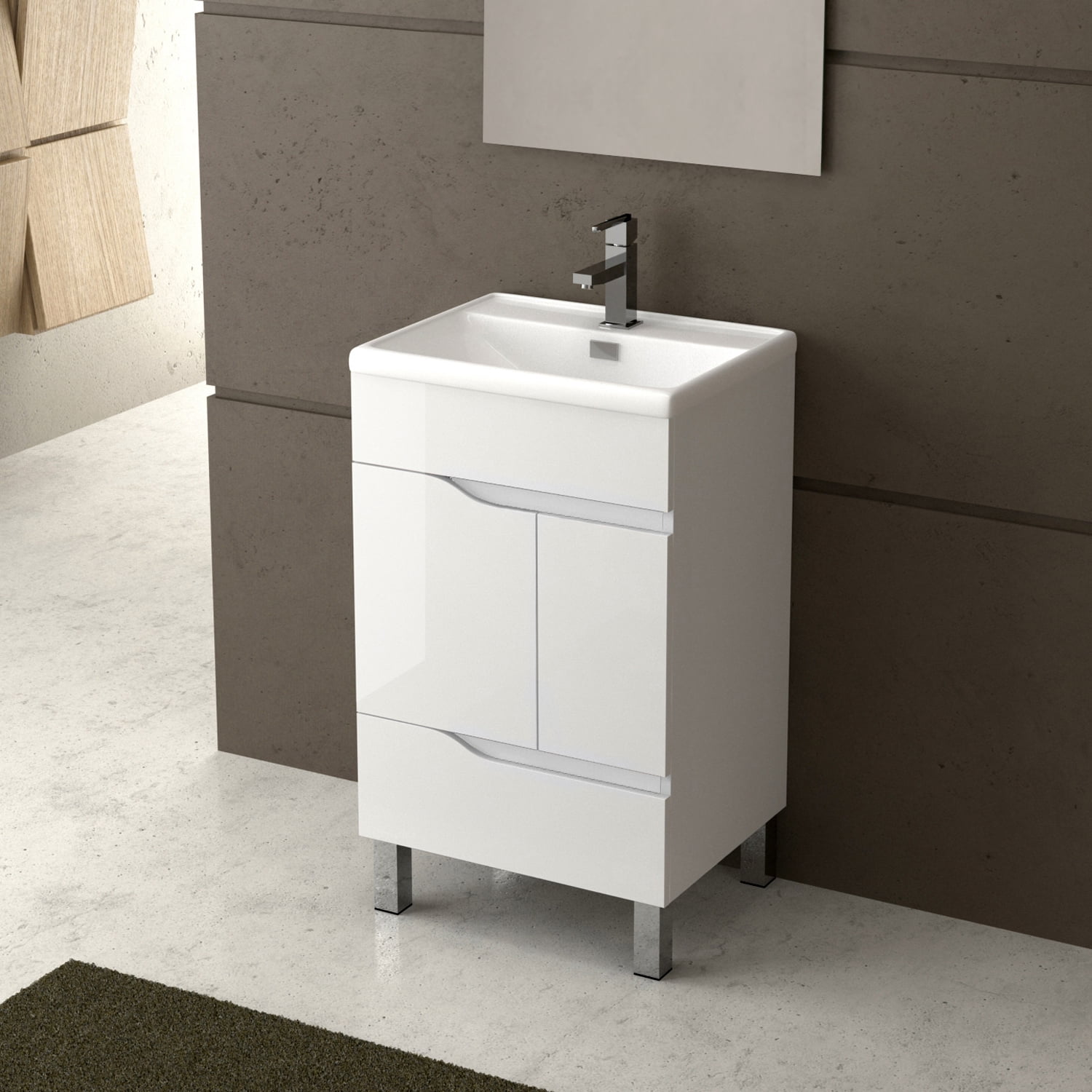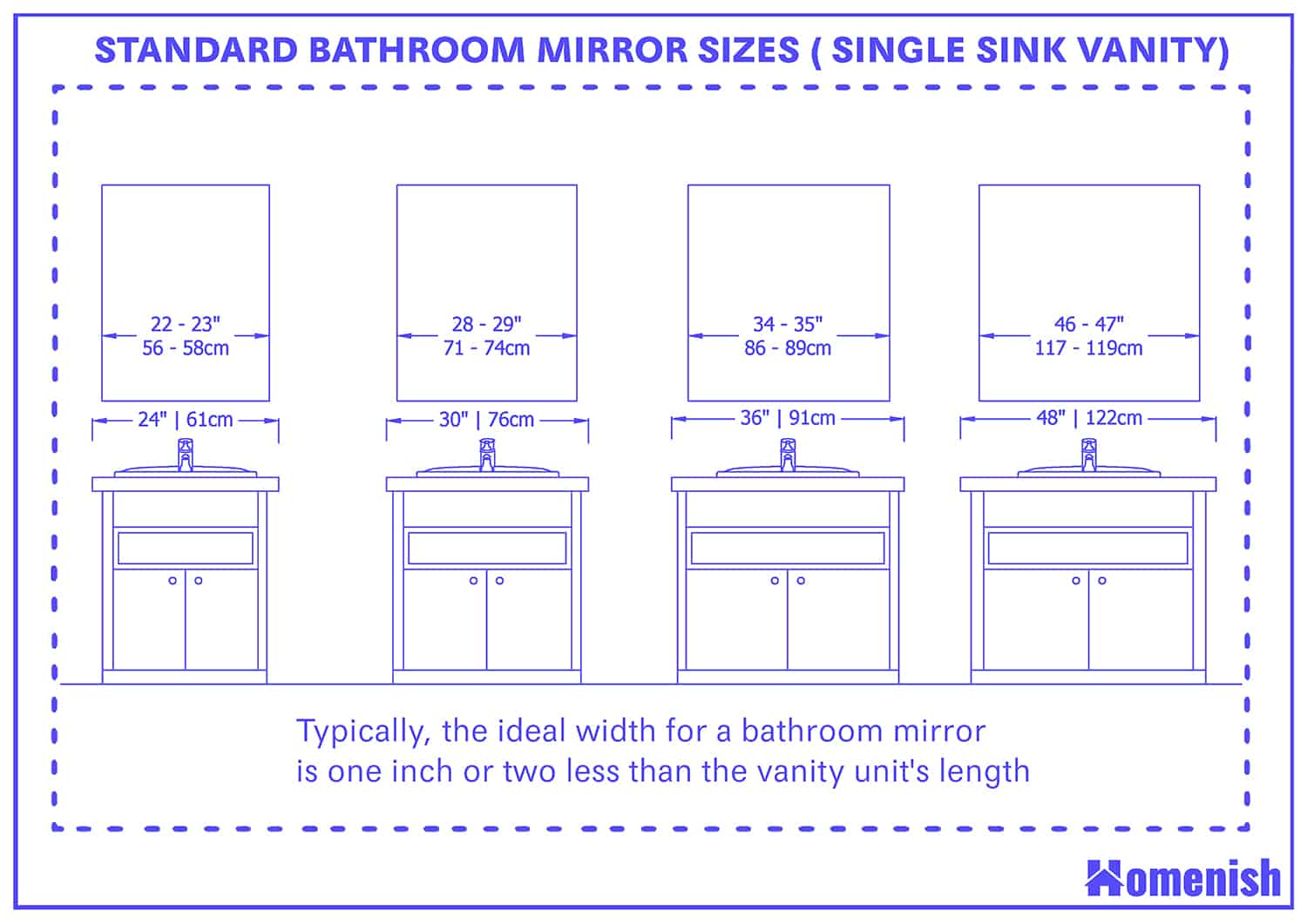The Appeal of a 20-Inch Bathroom Vanity

In the realm of bathroom design, where space often reigns supreme, the 20-inch bathroom vanity emerges as a practical and stylish solution, particularly for smaller bathrooms. Its compact footprint, without compromising functionality, makes it a compelling choice for maximizing space and creating a visually appealing environment.
Space-Saving Advantages
A 20-inch vanity is a game-changer for small bathrooms, offering several space-saving advantages:
- Maximizes Floor Space: By minimizing the vanity’s footprint, you free up valuable floor space, creating a more open and airy feel, especially in tight quarters.
- Provides Essential Storage: Despite its compact size, a 20-inch vanity can still provide ample storage for toiletries, towels, and other bathroom essentials, ensuring a clutter-free environment.
- Improves Circulation: A smaller vanity allows for easier movement around the bathroom, especially in smaller spaces, creating a more comfortable and functional layout.
Design Considerations and Features
The design of a 20-inch vanity plays a crucial role in maximizing its functionality and aesthetic appeal in a small bathroom:
- Vertical Storage: To maximize storage space within a compact footprint, look for vanities with tall cabinets, drawers, or shelves that utilize vertical space efficiently. This allows for storing a greater number of items while minimizing the vanity’s overall width.
- Open Shelving: Consider vanities with open shelves for displaying decorative items or storing frequently used items. This can create a sense of openness and reduce the feeling of a cramped space.
- Mirror Placement: A strategically placed mirror can create the illusion of more space, making a small bathroom appear larger. Choose a mirror that complements the vanity’s style and size, ensuring it reflects light and expands the visual space.
- Floating Design: A floating vanity, which appears to be suspended from the wall, can make a small bathroom feel more spacious by minimizing visual clutter. This design also allows for easier cleaning under the vanity.
- Minimalist Aesthetics: A minimalist vanity with clean lines and simple design elements can create a sense of calm and spaciousness in a small bathroom. Avoid overly ornate or bulky designs that might make the space feel cramped.
Bathroom Layout Examples, 20 inch bathroom vanity
Here are some bathroom layout examples that effectively incorporate a 20-inch vanity:
- Single Vanity Bathroom: In a small bathroom, a 20-inch vanity can be the perfect focal point, providing ample storage and countertop space without overwhelming the room. The remaining space can be utilized for a shower or bathtub, toilet, and storage shelves.
- Powder Room: A 20-inch vanity is ideal for a powder room, where space is limited. It can be paired with a compact toilet and a small sink, creating a functional and stylish space for guests.
- Corner Bathroom: A 20-inch corner vanity can make the most of limited space in a corner bathroom. This layout maximizes floor space and creates a visually appealing design.
Choosing the Right 20-Inch Vanity: 20 Inch Bathroom Vanity

A 20-inch bathroom vanity is a popular choice for small bathrooms, offering a compact yet functional solution for your space. When choosing a 20-inch vanity, it’s crucial to consider factors beyond just size. The right vanity can enhance your bathroom’s aesthetic appeal and maximize storage while ensuring practicality.
Materials Used for 20-Inch Vanities
The material of a vanity significantly influences its durability, aesthetics, and price.
- Wood: Solid wood vanities are known for their durability, natural beauty, and ability to be customized. They often come in various finishes, from classic to contemporary. Oak, maple, cherry, and walnut are common choices, each offering unique grain patterns and colors. However, wood vanities can be more expensive than other options.
- Laminate: Laminate vanities are more affordable and offer a wide range of colors and patterns, mimicking the look of wood or stone. They are also moisture-resistant, making them suitable for bathroom environments. However, laminate surfaces are less durable than solid wood and may show wear and tear over time.
- Acrylic: Acrylic vanities are becoming increasingly popular due to their durability, scratch resistance, and ease of cleaning. They are available in a variety of colors and styles, and their non-porous surface prevents bacteria growth. However, acrylic vanities may be more susceptible to heat damage than other materials.
Key Features to Consider
Beyond the material, several other key features should be considered when selecting a 20-inch vanity.
- Sink Type: 20-inch vanities often feature small vessel sinks, undermount sinks, or integrated sinks. Vessel sinks are stylish and space-saving, while undermount sinks offer a seamless look and easier cleaning. Integrated sinks are typically found in smaller vanities and offer a streamlined appearance.
- Storage Options: Storage is crucial in a small bathroom. Consider vanities with drawers, cabinets, or shelves to maximize storage space. Some vanities even offer pull-out drawers for easy access to toiletries and other items.
- Countertop Material: The countertop material should be durable, water-resistant, and complement the vanity’s style. Common options include granite, marble, quartz, laminate, and solid surface materials. Granite and marble are natural stones that offer a unique look and durability, while quartz is a man-made material that is stain-resistant and low-maintenance. Laminate and solid surface materials are more affordable and offer a variety of colors and patterns.
Designing a 20-Inch Vanity Layout for Small Bathrooms
A well-designed 20-inch vanity layout can make a small bathroom feel more spacious and functional.
- Maximize Vertical Space: Utilize the vertical space by installing shelves above the vanity or incorporating tall cabinets. This can help store towels, toiletries, and other items, keeping the countertop clear.
- Choose a Compact Sink: A vessel sink or integrated sink can save valuable countertop space in a small bathroom. Consider a rectangular or oval-shaped sink for a more streamlined look.
- Prioritize Functionality: Consider the placement of storage options to ensure easy access to frequently used items. For example, placing a pull-out drawer under the sink can make it easy to store toiletries and cleaning supplies.
Styling a 20-Inch Bathroom Vanity
A 20-inch bathroom vanity, while compact, can be a stylish and functional focal point in a small bathroom. With careful planning and creative choices, you can transform a limited space into a visually appealing and practical haven.
Color Palette for a Small Bathroom
Color plays a crucial role in shaping the perception of space. Light colors like white, cream, and pale pastels create an illusion of larger space. These colors reflect light, making the bathroom feel brighter and airier. In contrast, darker colors can make a small bathroom feel cramped.
Lighting for a Small Bathroom
Proper lighting is essential for creating a functional and aesthetically pleasing bathroom. A combination of natural and artificial light is ideal.
- Natural light: Maximize natural light by choosing a window treatment that allows ample sunlight to penetrate the space. A sheer curtain or blinds can effectively control light levels while maintaining a sense of openness.
- Artificial light: Install a combination of overhead lighting and task lighting. A well-placed vanity mirror with integrated lighting can illuminate the face for grooming, while overhead lighting provides general illumination. Consider using LED bulbs, which are energy-efficient and provide a bright, clear light.
Accessorizing a Small Bathroom
Accessories can enhance the functionality and style of a small bathroom.
- Storage solutions: Utilize vertical space with wall-mounted shelves or cabinets to maximize storage. Consider a tiered stand for toiletries or a floating shelf for decorative items.
- Decorative elements: Add personality with artwork, plants, or decorative towels. Choose pieces that complement the color scheme and overall design aesthetic. A small potted plant can bring a touch of nature and freshness to the space.
Creating a Cohesive Design Theme
Creating a cohesive design theme involves harmonizing the elements of the bathroom to create a unified and visually appealing space.
- Choose a theme: Select a theme that resonates with your personal style. Consider themes like modern minimalist, rustic farmhouse, or coastal chic.
- Color palette: Select a color palette that complements the chosen theme. Consider using a neutral base color with accent colors for a balanced and visually appealing space.
- Materials: Choose materials that are durable, moisture-resistant, and complement the chosen theme. Consider using natural materials like wood or stone for a rustic feel, or sleek, modern materials like metal or glass for a contemporary aesthetic.
- Accessories: Select accessories that enhance the functionality and style of the bathroom. Consider using storage solutions, decorative elements, and lighting fixtures that complement the chosen theme and color palette.
